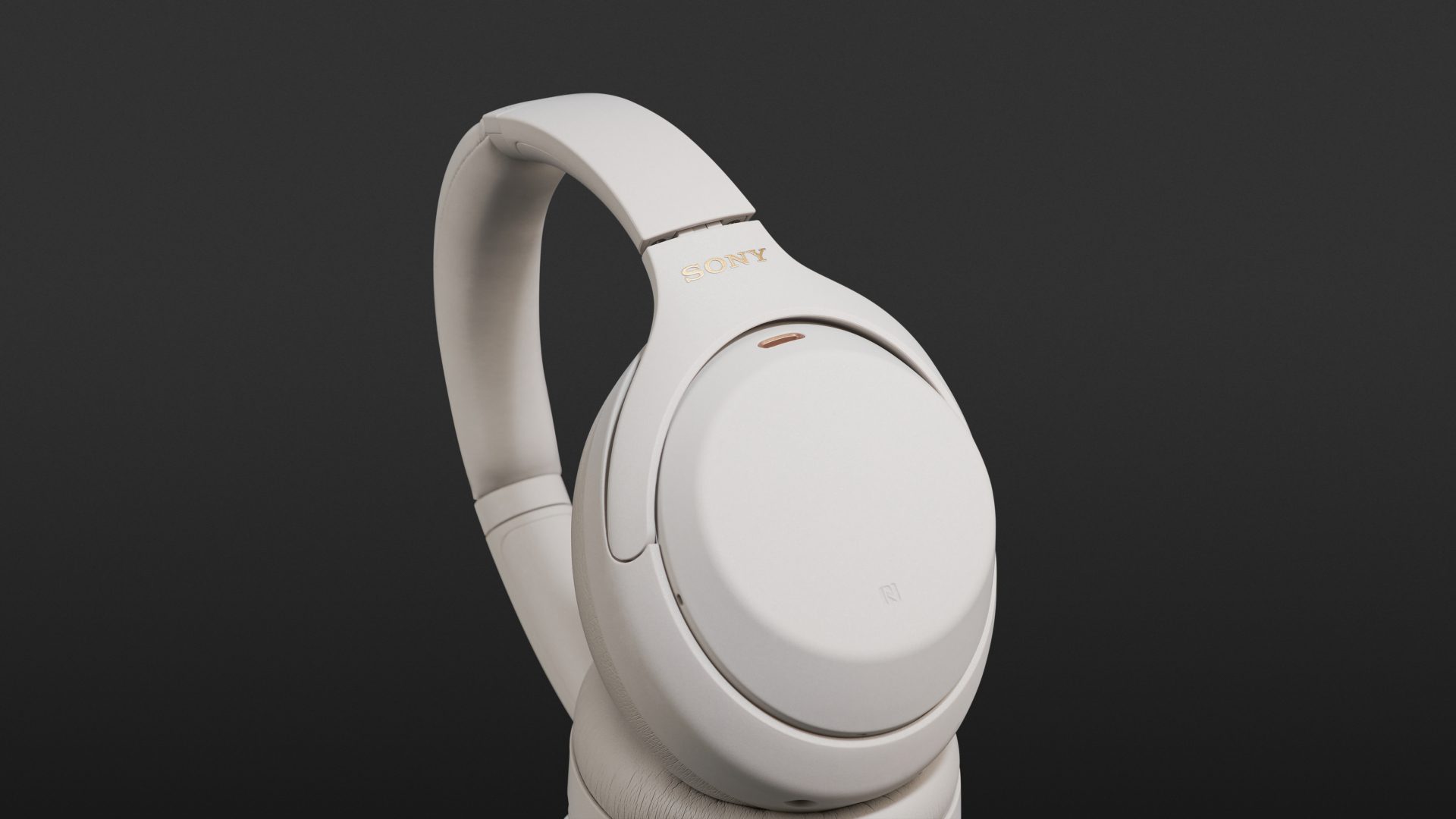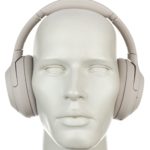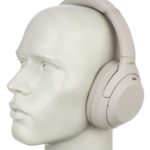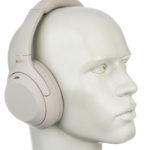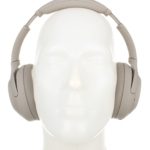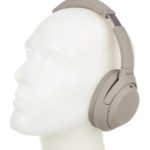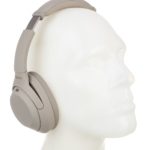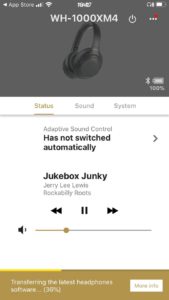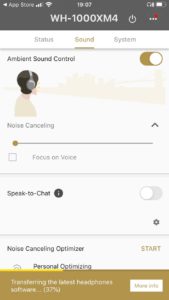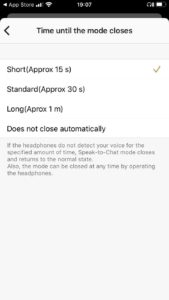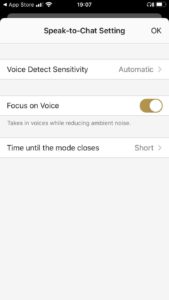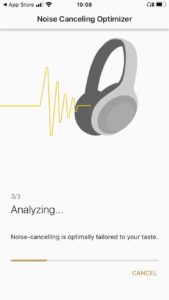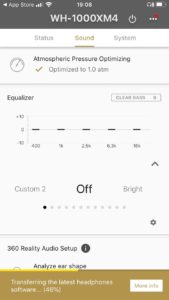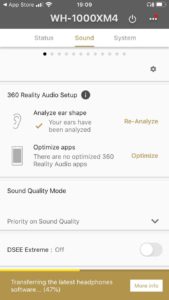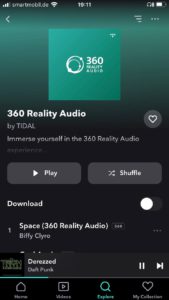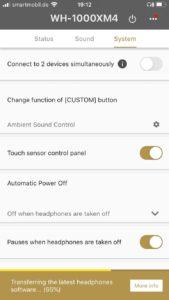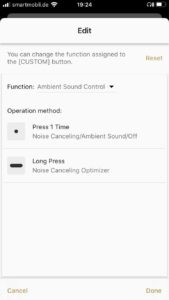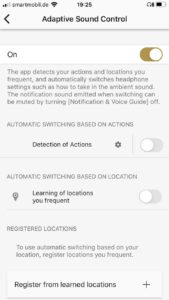We were impatiently awaiting the successor to the WH-1000XM3. And indeed, they are still convincing and practical headphones, which were absolutely impressive in terms of features, wearing comfort and noise cancelling. But the target market also has little to complain about in terms of sound. They sound coherent, powerful and give real listening pleasure.
With the WH-1000XM4 Sony can probably take the medal for producing the headphones that can be configured most comprehensively. Most of the functions concern noise cancelling and interaction with the environment. Nevertheless, the jump from their predecessor is rather small. In core competencies of sound and noise cancelling, the models are virtually identical, although the predecessor scores more points with a more comprehensive codec selection. There is an increase in ease of use thanks to new automatic functions and Bluetooth 5. If you are on the road a lot and depend on communication with the environment, this is definitely an advantage.
For the same price they are as good as before, which is why the WH-1000XM4 continues to sit in the top ranks of this product category, but does not put the competition further behind. On the contrary: currently the WH-1000XM4 is in competition with its predecessor, which is now available much cheaper in the sales. If you already own it anyway, there is no big incentive to change.
- coherent, powerful sound
- excellent noise cancelling
- extensive features
- very comfortable to wear
- extensive configuration options
- fewer Bluetooth codecs than its predecessor
The successor to the Sony WH-1000XM3 from 2018, one of the most popular over-ear headphones with noise-cancelling ever, has been eagerly awaited. Sony already conquered and successfully defended a top position in the market since the introduction of this product series in 2017 (MDR-1000). Accordingly, expectations are high…

Externally, the headphones, which are available in black and silver-grey, have not changed at all: straightforward, elegant high-quality workmanship, with an identical low weight of 255 grams. Sony once again relies on a combination of high-quality artificial leather upholstery and a discreetly rubberised matt surface, with the outside of the right ear cup being touch-sensitive.
Functionally, the WH-1000XM4 offer the usual full operation: like its predecessor, they use dynamic 40 mm drivers with neodymium magnets, a dedicated noise-cancelling chip and countless comfort functions, which can be configured via the free iOS/Android app “Headphones Connect”. For the wireless link, Sony now relies on Bluetooth 5 – with a stable range over several rooms.
The remarkable battery performance of 30 hours (music playback with noise cancelling) is again equal to its predecessor. 200 hours standby, three hours charging time via USB-C and a quick charge mode are all equally convincing along with the possibility of operating the headphones actively and passively via the included audio cable.
The economic use of codecs is astonishing: aptX and aptX HD have been removed without replacements. Although LDAC is still a premium codec, Mac users are not able to use it. In the worst case, the absence of the aptX family means it reverts to SBC on some Android Smartphones. Finally, the recommended retail price of 379 Euros remains unchanged and includes carrying case, audio and charging cable, and an aeroplane adapter.
In practice
First of all, the WH-1000XM4 fits comfortably, safely and securely on your head. This is ensured by the size-variable headband and the rotating, well-padded ear cups. For comparison, I had the MDR-1000X model on hand and they offer a slightly looser fit and the ear pads are less soft. In a direct comparison I preferred the WH-1000XM4.
On the left you find the on/off switch, which is also responsible for pairing (which is now possible with two devices). In addition, there is a custom switch that can be used to switch on noise cancelling and the so-called ambient sound control or to call up Google Assistant or Alexa (but not Siri).
The other functions are controlled via the touch sensor on the right ear cup: the music playback (start/pause) and call management are controlled by double-clicking; track skipping by horizontal wiping and the volume control with vertical wiping. The functionality is the same as before, but in my opinion there is room for improvement. With firmware 2.0.6. the double click required a quite strong pressure point. The volume control is not smooth, but switches up or down step by step with every swipe, accompanied by status tones that cannot be deactivated.
By placing your hand on the ear cup, you temporarily switch to ambient mode, in which the built-in microphones transmit external signals to the ear, thus enabling communication and improving the perception of the surrounding environment. The same function can be switched on permanently using the aforementioned button on the left ear cup. The new Speak-to-Chat mode is a nice idea. If you start talking, the music playback is paused and only resumes after an adjustable length of time. However, 15 seconds as the lower limit is too long. Nevertheless: if you’re on the road a lot and depend on regular communication with the environment, you will appreciate this function, and it may even come in useful in the office.
Some competitor’s have automatic pause and resume of music playback when the headphones are taken off. Sony’s latest headphones can switch themselves off automatically, making them even more suitable for everyday use.
Noise cancelling
Thanks to their excellent noise cancelling, Sony has already conquered the market. They use a dedicated chip for this task. The same QN1 chip is also used in the WH-1000XM4, in combination with quite good passive noise cancellation and a total of five microphones. There is also a so-called NC-Optimizer available at the push of a button. The manufacturer recommends starting this function, which is supposed to optimise the noise reduction function from time to time if the wearing conditions have changed (for example if you take off your glasses or change your hairstyle) or if the air pressure has changed between the time you board an aircraft and exit on the ground.
In terms of quality, there are no innovations to report, but the system can still be considered exemplary due to its effective mode of operation and good adaptability. Everything is possible, from the discreet suppression of low-frequency noise to an intensive relaxation room – with or without music. Nevertheless, I still have to admit that in operation without music, there is still a slight noise.
Static and low frequency sounds are well suppressed; speech and irregular sounds in the environment are clear, but not completely. However, the electronics do not eliminate high-frequency disturbances, such as train brakes, beyond the general isolation.
Above all, the WH-1000XM4 is characterised by the configurability of the system: Sony offers four modes that can be configured in terms of the degree of noise reduction, the intensity of ambient noise and the possible central focus for voices: sitting, walking, running and travel. The central filter makes voice announcements sound less natural, but results in better general noise reduction while still allowing you to understand these announcements.
By means of motion sensors and an air pressure measurement, it is possible to switch automatically between these modes if required. The app can now save certain locations, assign them to these modes and call them up automatically.
Basically I would like to continue to congratulate Sony on the performance of the noise reduction and the various interactions with the environment. No competitor can do better at the moment. One small detail: the WH-1000XM4 offers a separate setting that actually reduces the problem of wind sensitivity that can occur during outdoor use due to the external microphones. Also a feature that cannot be taken for granted: the noise cancelling on these headphones works in active cable mode if required – an absolute plus in aeroplanes.
Sound
Apart from the codec cutbacks, the new Sony model delivers familiar sound quality at a high level. In its class, Sony need not fear its competitors. At the same time, however, one must also note: Although the WH-1000XM4 is not cheap, the product can be classified as a headphone for the enjoyment of music on the move in modern life which achieves this in high quality, even if it is not an explicitly audiophile device.
The basic sound is clean and tuned for mobile use, so the low range of the WH-1000XM4 gives a little more throttle. You can hear a lot of details, a wide panning, a good dynamic conversion, a lot of pressure and good level reserves. In the bass range, the headphones are equally full-bodied, warm and tight. Even low bass is no problem. In the mid-range, there is power for voices and solo instruments but also for distorted guitars and drums. Here, these headphones represent a direct and fresh sound image for pop, electronic and rock, and they even cope with jazz, classical music or stripped back singer/songwriter genres. Finally, the trebles are open, well resolved, fast and without annoying harshness. In the end, a detailed, harmonious and powerful sound image emerges from this mixture, where only the bass range could have been a little less superficial. It is also clear that the detail and dynamic resolution as well as the transparency of audiophile specialists is not achieved. There are also limitations with regard to room imaging, but these apply to almost all closed headphones.
With these characteristics, the Sony WH-1000XM4 works across genres and rewards you with listening fun. This is especially the case as you can create this kind of sound experience with the help of noise cancelling, for example on an ICE train. But I can’t see any added value compared to its predecessor. In the direct comparison that I mentioned earlier, with the MDR-1000X, this one seemed to be much less uncluttered in the bass range.
The combination of noise cancelling and sound reproduction is not quite perfect. I noticed an annoying fluttering in the sound when riding the suburban train. This could be caused by the measurement sensor for air density, which is brought out of sync by closing doors, open windows and passing trains and which benefit from being able to be switched off separately in the future.
Sony has even more special functions to offer: These include the switchable, improved sound optimization for compressed audio files DSEE Extreme. As with their predecessor, I honestly have to admit that with AAC on an iPhone 8, I can’t hear any difference. With the LDAC codec (Sony Xperia 10, Android) the sound image moved a little bit forward. Only using iOS did this switching cause a small interruption.
The five-band graphic equalizer with additional clear bass control is more useful. It offers some presets and two memory locations. If you want to adjust the sound of the headphones, you will find an effective tool here. By the way, in the test the respective codec is retained – this was partly not the case in the predecessor. Nevertheless I stumbled over a bug: If you switch from a neutral custom setting to the switched off state of the equalizer, there is a volume jump.
The active operation with cable sounds basically identical, but the app is no longer usable. The passive mode is quieter and the sound is also more colourless. So I would consider this mode as a fallback scenario.
Sony has dropped what I consider to be unnecessary options for placing the music playback in surround sound or adding additional space. Instead, there is compatibility with 360 Audio – a fairly new format that allows providers like Tidal, Deezer and nugs.net to expand selected recordings to a virtual surround format. That sounds exciting. After some test runs with corresponding titles at Tidal, I came to the conclusion that the sound quality clearly lags behind a regular stereo recording. It may sound more spatial, definitely, but it sounds less direct and powerful. Last but not least, there is big praise for the high voice quality during phone calls: Communication is extremely clear and understandable in both directions.
Technical specifications
- Ear couplingOver-ear
- Typeclosed
- Transducer principledynamic
- Frequency response (headphones)4 - 40.000 Hz
- Impedance51,55 ohms
- Sound pressure level (SPL)108,3 dB
- Pressure averaged from big and small head561 g
- Weight with cable266 g
- Weight without cable252 g
- Cable length120 cm
What's in the box
- Mini jack cable
- USB-C charging cable (approx. 20cm)
- Airplane adapter
- Bag
Special features
- available in black and silver
- BT codecs: SBC, AAC, LDAC
- BT version: 5.0
- BT profiles: A2DP, AVRCP, HFP, HSP
- NFC
- Battery charging time: approx. 3 hours (complete charge)










